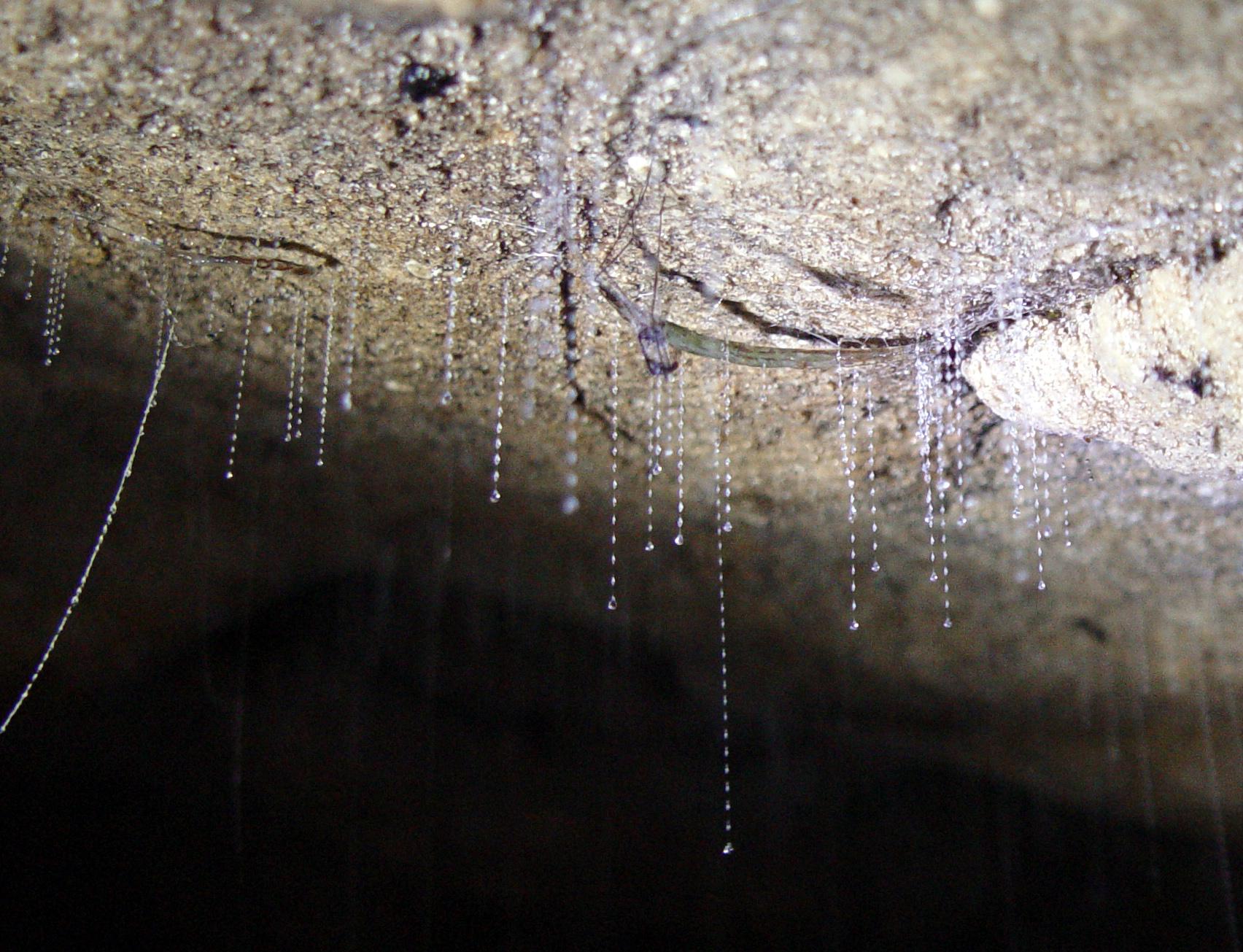How glow worms get their glow on
Two Arachnocampa luminosa larvae rest on the roof of a cave.
Visitors to certain New Zealand caves are treated to an amazing sight: Thousands of little lights twinkling on the cave walls, like Christmas lights. But the little lights aren’t bulbs or even fireflies — they’re glow worms.
“Technically, a glow worm is actually a glowing maggot, but that doesn't sound as romantic," says Miriam Sharpe, a biochemistry researcher at the University of Otago in New Zealand.
Sharpe and her colleague Kurt Krause are working to understand the chemistry behind the glow worm’s ghostly blue light — one of at least 40 different bioluminescent systems that animals around the world have evolved to help them hunt or mate. Video producer Chelsea Fiske filmed their research for Science Friday’s newest Macroscope documentary, “Shedding Light on the New Zealand Glow Worm.”
The first thing you need to know: Glow worms are not larval fireflies. “So fireflies are in the northern hemisphere and it's funny, because fireflies are actually beetles, and these glow worms, they're the larval stage of a fungus gnat, which is more like a fly,” Fiske says. “This species was specific to New Zealand; there's also a couple of other species in Australia, and that's it.”
To capture the glow worms on film, Fiske and her husband set out at night to some of New Zealand’s lesser-known glow worm caves. “Oftentimes these caves are in the strangest places, in the middle of a sheep paddock or something,” she says. “And so we would trek in with our gear and it's kind of eerie because there are oftentimes eels in the creeks in the caves, which can bite. But it was completely worth it, it’s magical.”
One scene shows the researchers collecting glow worms in the dark, in a ravine not far from their university. Using a little wooden kebab stick, Sharpe gently works the glow worms off of the ravine wall and drops them in a test tube. (Not too many in one tube, according to Fiske: the glow worms are carnivores, and will even devour each other.)
Back in the lab, the researchers freeze the glow worms. Then, they cut off the light organs at the end of their tails and mash them together. From there, it’s all biochemistry: the researchers separate the proteins according to size and test them in a machine to determine which proteins are producing light.
“So they're separating out the proteins in these light organs to identify the protein or enzyme which they call a luciferase,” Fiske says. “And then also a chemical, a small molecule substrate or a luciferin. And so those two things are the components that they're looking for that make these bioluminescent creatures glow.”
What the researchers have found is, well, illuminating. For one, the glow worm’s substrate is made from different chemicals than those used by fireflies, as Sharpe explains in the film — a discovery that could have real-world applications.
“People use bioluminescence all the time in biomedical research, but the thing is with every different bioluminescent system it has its own characteristics,” she adds. “And with different characteristics, you can come up with different uses for that particular system.”
But the researchers also just want to understand why glow worms glow. “It's very refreshing actually,” Fiske says. “You know, they're definitely just in the pursuit of knowledge.” Even if in the end, we’re just talking about maggots.
“When you're there in the middle of a glow worm cave and you feel like you're surrounded by 360 degrees of starlight, it's still magical regardless of the fact that they're actually a fungus gnat,” Fiske says.
This article is based on an interview that aired on PRI’s Science Friday with Ira Flatow.
